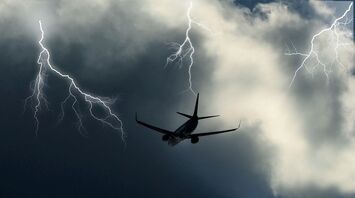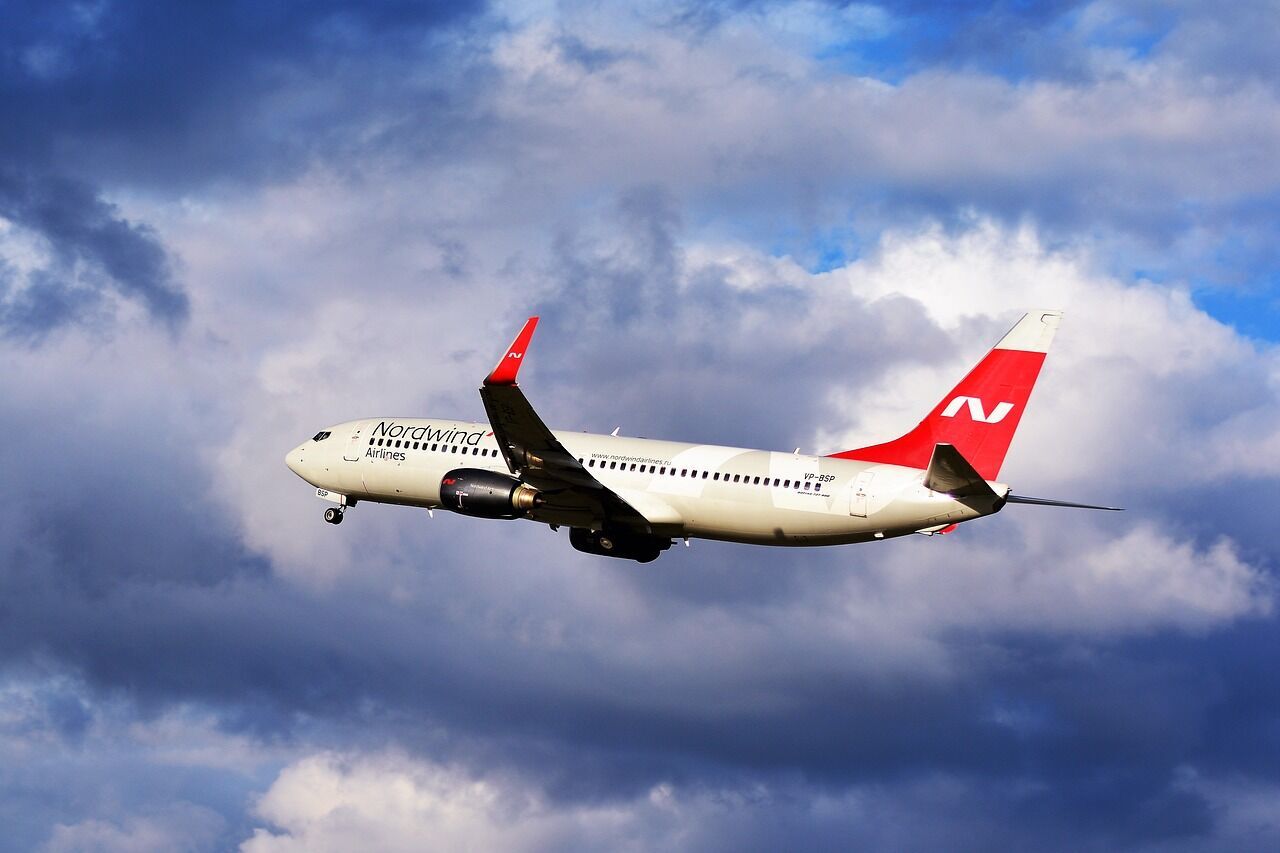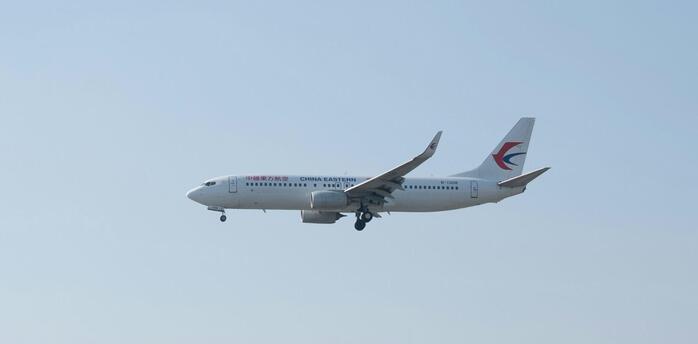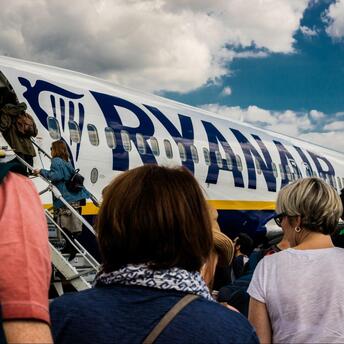Is it possible to fly on an airplane during a thunderstorm: what if the plane is struck by lightning, taking off during a storm and why flights are delayed?

Even experienced air travelers are frightened by thunderstorms: sitting at the airport waiting for departure and watching the dark clouds on the horizon, the question arises in their minds whether it is safe to fly in a thunderstorm. Despite the fact that airports today use the most modern meteorological systems, and dispatchers together with pilots build the safest trajectories, getting into the thunderstorm zone during the flight is quite common. In fact, while lightning seems pretty scary, it's not that big of a threat to commercial airplanes. In this guide, we'll break down all the issues related to flying safely during a thunderstorm or storm so that future flights in inclement weather won't be so frightening for you.
Is a thunderstorm an obstacle to flying?

So, can an airplane fly during a thunderstorm? Naturally, it can, and if you look at the statistics, you'll notice that actually thunderstorms don't affect flight schedules that much. So a significant delay or cancelation of a flight due to an ordinary thunderstorm is rare. But when it comes to a severe thunderstorm or storm, these factors can cause a flight to be canceled because it will be unsafe for the plane to take off.
But you might be even more surprised to learn that virtually every commercial airplane that takes to the skies today has been struck by lightning. And it's quite likely that you too have flown on some board that has experienced such an "encounter".
Is it safe to be on an airplane during a thunderstorm?
Flying in such inclement weather is allowed by the airplane's design. If you think that after a lightning strike the airplane falls apart in the air, then you should calm down and not draw such horrifying scenes in your imagination. In fact, modern airplanes are designed to withstand lightning strikes without sustaining serious damage.
Aircraft designers assume that lightning strikes are most likely to strike the tail or wing tips of an airliner, so these key areas are designed with special safety margins and reinforcements. They help distribute the electrical charge so that it doesn't collapse the airplane.
What problems can thunderstorms cause?
Inside a thunderstorm cell, there are whirlpools of winds that change direction rapidly. They can have serious consequences for the airplane. They will not lead to a crash, so if you are wondering if you can fly an airplane during a thunderstorm, the answer is yes. But these variable winds are quite significant enough to create serious discomfort for passengers. Due to severe turbulence, people on board can be injured.
Downpours also create dangerous situations for the airplane, but not during flight, but during landing. To stop a 200-ton aircraft on a runway, a pilot must demonstrate precise calculations, effort and experience. As with a car, stopping is more effective on a dry runway surface. But the more water there is, the less effective the brakes become. If there is too much water, the phenomenon of aquaplaning can occur when the aircraft tires lose contact with the surface. That's why airport runways are grooved so that the center of the runway is actually higher than the edges. This helps drain excess water.
A storm and thunderstorm near an airport can pose a threat not only to the board in the air, but also to those working on the ground. Personnel who are loading and unloading luggage into holds, filling tanks with fuel are also at risk. Therefore, when lightning is detected nearby, airports often require that the apron area be closed and all urgent work necessary for departure be suspended. This also becomes a cause of flight delays and planes arriving for landing.
Can airplanes take off during a thunderstorm?
If the flight itself during inclement weather is a fairly familiar and relatively safe situation, it is with takeoff that the case is different. Most flight delays due to severe thunderstorms are not related to whether it is safe to fly an airplane in a thunderstorm, but to the need to take off in such conditions.
Even disregarding thunderstorms, takeoff is one of the most difficult and risky phases of flight. It is technically possible to take off during a thunderstorm. But dispatchers, pilots and other air traffic specialists make every effort to wait out the storm on the ground and wait for it to subside before setting off. This is because an airplane is most vulnerable at low speeds, particularly after it has just gotten airborne.
Is it safe to land during a thunderstorm?
Just as with takeoff, airplanes can land during thunderstorms, and such precedents do occur. Here, however, pilots and air traffic controllers have to act according to the situation, relying on their experience and judgment to choose a safe scenario for how and when to land the aircraft on the ground.
As with takeoff, the main risk in this situation is associated with micro gusts. These are small but strong columns of air that occur during a storm. They can affect the movement of the airplane, so in such moments it is harder for pilots to keep the board under control.
Conclusions: is it safe to fly during a storm?
In most cases, it is safe for modern airplanes to fly in a storm because their design can withstand rain, wind, lightning strikes and other conditions. The actions of personnel also play a significant role: pilots undergo special training to promptly make the right decisions to ensure the safety of the airplane and passengers during a flight in a storm. Thus, for a passenger, the main trouble he or she can expect from flying in a storm is a delayed flight or a late landing, as well as a canceled flight in particularly difficult weather conditions.
If there is a swath of storms in the path of an airplane, it becomes more difficult to choose a suitable route, especially if there are several boards in a relatively small area with severe thunderstorms trying to avoid them. That's why sometimes situations arise where several flights from one airport may be delayed, while others quietly depart on time. It's worth realizing that the bad weather causing a flight delay may not only be outside your window, but hundreds of miles away along the route.
Frequently Asked Questions

Can an airplane crash due to a thunderstorm?
A thunderstorm is an unlikely cause for an airplane to go down, as the airplane can withstand a lightning strike without serious damage. Moreover, rain, wind and hail pose a much greater danger to an airplane than lightning and thunder.
Does the type of thunderstorm affect flight safety?
Thunderstorms vary in intensity and some can be quite severe. Intense and severe storms pose a great risk to flight. If the weather conditions are too bad, the airplane will not take off or land.
Can a flight be canceled because of a thunderstorm?
This situation could very well be the case if it becomes unsafe or even impossible to take off due to weather conditions. In fact, it happens all over the world on a regular basis. So if you need to fly at this time, you will have to wait until the thunderstorm subsides.
Is it possible to fly during heavy rain?
Modern airplanes are adapted for flying in heavy rain, so precipitation is not a noticeable threat to the board in the air either, and most often the plane can take off and land during rain, although heavy rain makes this process a bit more difficult.
Does the airplane land during a thunderstorm?
Landing is one of the most difficult parts of flying, as is takeoff, and a thunderstorm at this time can be an unfavorable factor. But it also depends on the specific circumstances. Micro gusts and strong winds are dangerous, so pilots, together with air traffic control officers, jointly work out the procedure and make a decision about air travel during a thunderstorm and possible landing in the storm area.



















